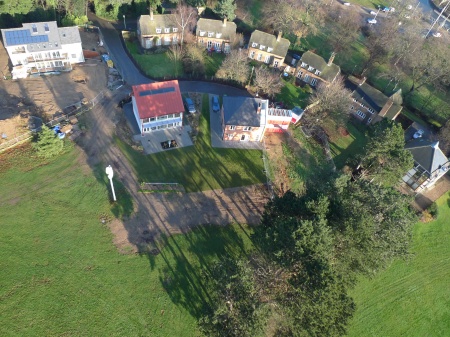
February 8, 2013, by Malvika Johal
Green Close – The most monitored street in the world?
By Rachel Third
If you’d asked me on Monday to put my money on what would be the most closely monitored building in the world, I’d have felt pretty confident in saying the White House, or Downing Street. The constant surveillance undertaken in the interest of national security is surely unparalleled. However, after hearing Professor Mark Gillott of the University’s Institute of Sustainable Energy Technology speak at Tuesday’s ‘Talent on Tour’ Roadshow Event, I’m not so sure.
There are buildings which are purpose-built to be monitored, every minute of the day and night, over several years. What’s more – people actually live here, and they are tracked too. Their movements, their patterns of living, what appliances they use and when, when they’re feeling too cold, too hot or restless. These buildings aren’t to be found in a 1984-style dystrophic novel. They’re built on University Park Campus.
Welcome to ‘Green Close’, a cul-de-sac boasting seven state-of-the-art energy-efficient homes of the future. The University has partnered with key players in the industry such as E.ON to construct these multi-award winning Creative Energy Homes, including a recreation of the traditional 1930’s semi which will be upgraded gradually to turn around its poor energy efficiency performance.
As Professor Gillott points out, our homes contribute hugely to the causes of climate change. To quote one horrifying statistic, the average UK house emits enough carbon throughout the year to fill six hot air balloons full of CO2. The Government’s zero-carbon roadmap sets goals for all new housing to be zero carbon by 2016 as well as a widescale programme of retrofitting the 26 million existing properties in the UK, and the study of the Creative Energy Homes on Green Close are crucially informing both government policy and industry investment.
The homes on Green Close are digs with a difference. University members, including students, are full-time residents in these buildings – acting as live-in subjects in a real-world laboratory. Professor Gillott and the team are asking the crucial questions about our behaviour as individuals, in our own homes. What’s happened to our lifestyles? Are we being ruled by power-hungry appliances? By understanding occupancy behaviour, we can create models to reduce wasted energy.
In addition to being well-watched, these houses are also well-visited, with over 3000 people coming to see the projects each year. Guests have even been welcomed for sleep-overs at the homes; however in some cases their energy usage reports were less welcome. Blue Peter presenters Helen Skelton and Barney Harwood spent 24 hours ‘living’ in one of the homes, and discovered that they left a carbon footprint that was 3 times bigger than the average UK household! Helen, Barney and Barney the Dog came away promising to go greener.
Alumni and friends of the University are invited to come and have a look at the homes which will be open to the public during May Fest, the University’s open day for the community on Saturday 18th May 2013. www.nottingham.ac.uk/mayfest
No comments yet, fill out a comment to be the first

Leave a Reply